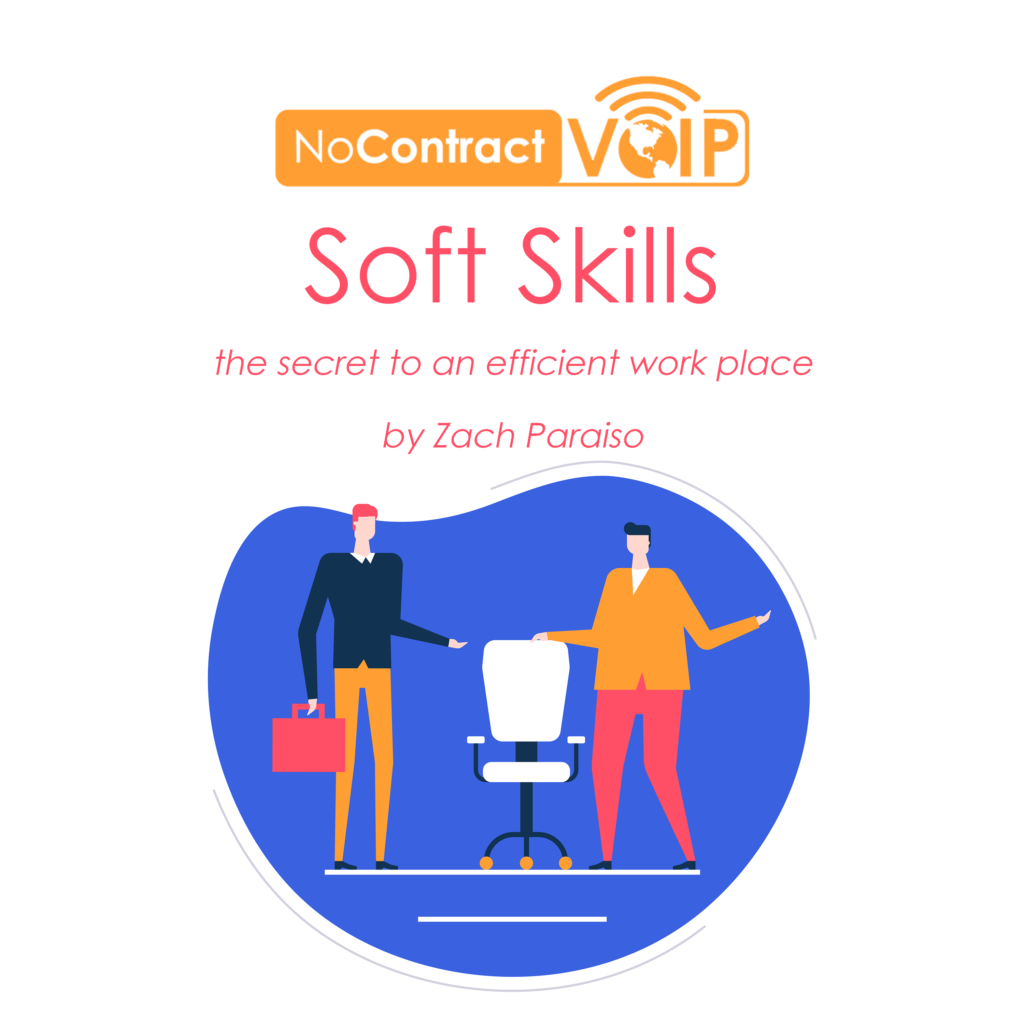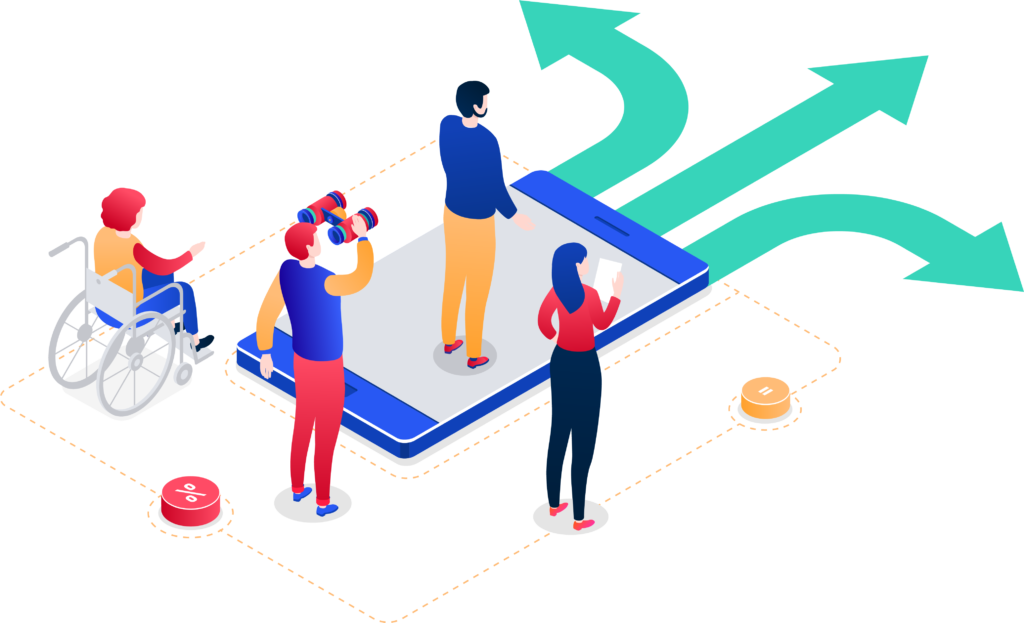Soft Skills: The Secret To An Efficient Work Place
Soft Skills, The Secret To An Efficient Work Place
In the spring of 2017, Google released a study detailing which of their teams produce the most inventive and productive new ideas. This study, known as Project Aristotle, concluded that out of the eight most important qualities of their top employees, STEM expertise (science, technology, engineering, and mathematics) is ranked dead-last. Contrary to general expectations, the most productive teams at Google are not the most traditionally intelligent, or “book-smart”. Their soft skills, such as curiosity, emotional intelligence, and empathy are the competencies that sustained their success.
So what exactly are soft skills? And which soft skills are important for success in the workplace?
Soft Skills vs. Hard Skills
Simply put, hard skills are abilities that can be measured and are usually specific to a job, while soft skills are much harder to measure and are relevant universally.
Examples of hard skills include sales, foreign language proficiency, typing speed, and Photoshop expertise. These skills do not easily translate from one profession to another; typing speed is meaningless in the construction field just as physical strength does not make much of a difference as an accountant. Analyzing hard skills is a valuable way for companies to determine whether a candidate has the sufficient knowledge and experience for their job. Evidence of hard skills can be easily inspected; past job experience and educational history are examples of indications of hard skill that can normally be seen on a resume.
On the other hand, soft skills such as decision-making, persuasion, and resourcefulness are valuable in just about any field. It is important to be conscious of these skills because they are good indicators of culture fit and potential growth within a company. From the perspective of a hiring manager, soft skills may be seen as more valuable than hard skills; it is much easier to train someone on using software or running cable than it is to train them to be more empathetic or resilient.
Most Valuable Soft Skills in the Workplace
Now that we have established the importance of soft skills, which soft skills should we look to cultivate in the workplace? And how do these skills contribute to a successful company culture?
Emotional Intelligence
Emotional intelligence is defined by the Harvard Business School as the ability to understand and manage your own emotions, as well as recognize and influence the emotions of those around you. Being emotionally intelligent is an important stipulation of both self-improvement and the improvement of relationship management in the workplace.
One major component of emotional intelligence is self-awareness. A lack of self-awareness can alienate an employee from their peers. Stubbornness, lack of accountability, and unwillingness to improve are traits that can be attributed to a lack of self-awareness. Being cognizant of how your emotions affect others allows you to be able to adjust your behaviors to build stronger relationships and communicate more effectively. Self-awareness is particularly important in positions of leadership. Humility — or knowing that you don’t know everything — is key to continuous improvement. Encourage constructive feedback and get into the habit of asking yourself, “What can I do better?”
The next element of emotional intelligence to consider is self-regulation. This should not be mistaken as the ability to hide your emotions. Instead, recognize self-regulation as the discipline to control emotions and not allow them to affect decision-making, especially under pressure. Pressure and stressful situations are inevitable in the workplace. On the flip side, these should be recognized as opportunities for learning and growth. It is for this reason that stress management and self-regulation of emotions is so critical. Take a second to pause and think before you act. Remember that you control your emotions, not the other way around.
Lastly, a discussion about emotional intelligence is incomplete without mentioning empathy, specifically cognitive empathy. This category of empathy refers to the ability to understand how a person feels, and what they might be thinking. In other words, you are placing yourself in another person’s shoes. Challenging yourself to look at issues from different perspectives is a surefire way of strengthening working relationships. An open-minded approach inspires creativity and eager collaboration. Working as a team boosts productivity, creativity, and employee morale.
The customer experience, and by extension empathy, has recently become a prominent topic in the business world:
- In August of 2019, the Business Roundtable, an association representing top CEOs in the United States, made a statement advocating balancing the needs of shareholders with customers, employees, suppliers, and local communities.
- Qualtrics, a customer experience management software developer, announced a $14 billion IPO at the beginning of 2021.
Empathy as a means of improving customer experience and therefore retaining customers is clearly a valuable resource in today’s business landscape. For marketing and sales teams, it can be up to 25 times less expensive to focus on retaining customers as opposed to replacing them!
Growth Mindset
Having a growth mindset, or believing that talents and abilities can be developed through hard work, is essential to continuous learning and overall self-improvement.
On the other hand, a fixed mindset is frequently the reason for stagnated progression in self-development and in one’s career. This mindset considers intelligence, character, and creative ability to be unchangeable. If they are not able to completely avoid a challenge, they will usually give up on that obstacle easily. Furthermore, attempting to improve through effort and receiving criticism is seen as virtually pointless. People that work in a culture dominated by a fixed mindset frequently report deception among employees to gain advantages and admiration. A fixed mindset will provoke an urgent need to prove and validate themselves in order to confirm their own “fixed” attributes. Deficiencies in those attributes would result in a damaged sense of self.
Given these points, it should be clear that we need to avoid a fixed mindset as much as possible! People with a growth mindset will instead embrace and endure challenges, while seeing these obstacles as a means of improving and growing. Constructive criticism is welcomed and the success of others serves as an inspiration instead of as a source of jealousy. Evaluate your tendencies in the workplace. Do you act defensively in response to feedback? When was the last time you tried to learn something new? How did you react to a challenging obstacle?
Realistically, we cannot expect to have a growth mindset in all areas at all times. Self-awareness is important for this very reason; always try to make time to evaluate your decisions and reactions so you can continue to improve. Recognize when your fixed mindset emerges in difficult situations. Furthermore, do not confuse having a growth mindset as simply putting forward pointless effort. Productive effort, improvement, and innovation should be the results that are rewarded.
Problem Solving
The skill of problem-solving is a process that encompasses many other commonly sought-after soft skills; logic, creativity, and critical thinking are all required to solve the most complex problems. The process will obviously vary by situation, so the following steps should be taken as an approximate framework to tackling an issue.
One of the most important steps to tackling an issue is accurately identifying and understanding the problem at hand. Avoid making assumptions. An inaccurate diagnosis will negatively influence each subsequent phase of problem-solving. Furthermore, it is important to establish exactly what the problem is so that there is no confusion in the future about whether or not it has been completely resolved. Be sure to document as much as possible in this step of the problem-solving process; this will pay dividends in the future if any further troubleshooting has to be done. In this particular stage of a problem-solving process, critical thinking is the soft skill that is necessary to effectively collect data and objectively analyze the information at hand.
Next, list and evaluate the possible options. Brainstorming sessions require creativity, or the ability to think outside of the box. To encourage this creativity, create a space that is judgement-free and receptive to all ideas. Though it may sound odd, beginning with a “bad idea brainstorm” can be an effective way to encourage and loosen up reserved participants. Instead of asking participants to think of useful ideas, have them formulate the worst and most ridiculous solutions to a problem. The goal here is to set the tone that all ideas are welcome and to encourage participation. Another way to facilitate creativity is to lay out ideas visually. Flow charts and whiteboards are two simple tools that can assist with developing and deciding on solutions for issues.
Eventually, you will decide on and begin to implement a solution. This is not as simple as it sounds. When the problem-solving process is in the implementation stage, you can expect to see it divided into three stages:
- Planning and preparing
- Implementing and monitoring
- Reviewing and analyzing
Thorough planning and preparing involves specifying the actions and resources required, along with the time frame that is stipulated by the situation. Laying out the planned sequence of actions is useful in determining the required resources since you can go step-by-step to designate resources where they are needed. You may also notice that certain equipment or a particular person are not available at certain stages. Avoid a crisis with proper preparation. Critical thinking is important here to analyze the requirements of the plan and keep track of high-priority resources.
Once preparation is complete and the first action has been taken, we must monitor the situation to confirm whether or not everything is going according to plan. If the situation is deviating from the plan, we will have opportunities to devise solutions to get things back on course. Corrective actions can be taken to mitigate any minor problems, but major issues in implementation may require completely stopping the process and reexamining the plan put into place. The inherent unpredictability of this stage of implementation means that adaptability is a valuable asset to have, so that we can avoid any major delays or setbacks to our plan.
Lastly, the outcome of this process will be reviewed and analyzed. Was the issue resolved as it was laid out in the very first step of the process? Do any additional actions need to be taken? This stage of the problem-solving process holds most of its value in the long-term. If your team comes across another similar case, they will be able to refer back to this analysis to expedite their process. Furthermore, the analysis that takes place in this step can help your team implement safeguards against this issue in the future.
Communication
Communication is at the core of every business. Employees send each other emails, customers call in, and departments have meetings for the sole purpose of improving communication. Miscommunication can lead to poor customer experience or even increased vulnerability to cyberattacks and data breaches! A 2011 study reported that $37 billion was the cost of poor communication to 400 surveyed corporations in that year. Broken down further, this amounts to around $26,041 per worker per year! On the other hand, companies with leaders categorized as “highly effective communicators” enjoyed 47% higher total returns to shareholders compared to those that had less effective communicators. Committing to improving communication in the workplace is undoubtedly a worthwhile investment.
It is important to remember that effective communication consists of two things: conveying ideas and listening. With that being said, one of the most important aspects of communication is active listening. This refers to fully engaging and immersing yourself in what another person is saying. Offering your own opinion is not necessary in active listening. Furthermore, you should avoid interrupting, becoming distracted, and “topping” the story. These habits leave the impression that you are not actually paying attention to what the speaker is saying. Shut down your internal dialogue while they are speaking. There are many times we may catch ourselves beginning to formulate responses or judgements to what they are saying while they are saying it!.Premature judgement leads to the listener being less receptive to what is being said. Let the speaker complete their thought and then ask clarifying questions to encourage the conversation.
One of the most important aspects of nonverbal communication is eye contact. A study has shown that people will be more likely to remember a conversation if eye contact was maintained. Clearly, eye contact is valuable for any efforts to generate meaningful conversations and build rapport within a team or with a customer. Another significant benefit of maintaining eye contact is more effective persuasion by creating a perception of trustworthiness and confidence. Studies have shown that people are more likely to believe statements given by a speaker looking directly at them. Additionally, they are likely to make judgements of character based on whether or not eye contact was maintained. Keep these findings in mind during your next customer interaction.
Before learning how to be a more effective communicator, you need to learn exactly who it is that you are communicating with. In other words, know your audience. Different communication styles means communicating with different degrees of emotion and structure. For example, one person may appreciate a more informal and more sentiment-driven approach (“We are off to a great start this year!”), while another may prefer a formal and data-driven style (“Our sales are up 8.9% this month!”). Being able to identify and adjust to the four different communication styles will help ensure that nothing is lost to poor communication:
- Intuitive communicators – unemotional and freeform. This communication style is usually characterized as being quick and to the point. Broad overviews and getting straight to the bottom-line are preferred over step-by-step and detail-driven analysis. Intuitive communicators will usually have difficulty connecting with functional communicators, since they do not have the patience to get into the details of every situation.
- Analytical communicators – unemotional and linear. These communicators need hard data and details to properly evaluate a situation. Analytical communicators disapprove of emotion being involved in decision-making along with ambiguous information being provided to them. Technical competency is a significant strength, but they may appear to be unapproachable and standoffish.
- Functional communicators – emotional and linear. Thorough preparation and attention to detail are signature characteristics of this category of communicator. Functional communicators like to analyze issues and communicate ideas in a step-by-step format while including as many details as possible. They are reliable when tasked with implementing plans, but do not communicate well with people who would rather focus on the big picture rather than details.
- Personal communicators – emotional and freeform. This group of communicators seeks emotional connection and is skilled at creating deep relationships with others. Personal communicators tend to have higher levels of emotional intelligence, so they are great at listening and resolving conflict. It may be hard to create connections with intuitive and analytical communicators, since they would prefer logical conversations without considering personal feelings.
With this knowledge of the various types of communicators, ask yourself:
Which category do you fall under? And how can you make it easier to connect with other types of communicators?
Conclusion
Clearly, the development of soft skills, or lack thereof, plays a significant role in the success of a business. They are skills that should be sought-after by hiring managers, since they are applicable in any position within a business. Workers seeking advancement and leaders looking to build a positive company culture should look to follow the example of successful industry leaders, and pay close attention to the soft skills being cultivated within an organization.
Why Is This Published By A Business Phone Company?
Here at NoContractVoIP, we believe that your success creates our success. And, since we specialize in business communication, we work to help you communicate better while staying safe. We create the cutting edge communication systems that modern companies need. And we geek out on tech stuff, so we study it for you.
To talk to a business phone system specialist and never worry about any of this again, call 866-550-0005 or contact us today.
To get the latest helpful content delivered to your inbox every month, subscribe to our newsletter here.



